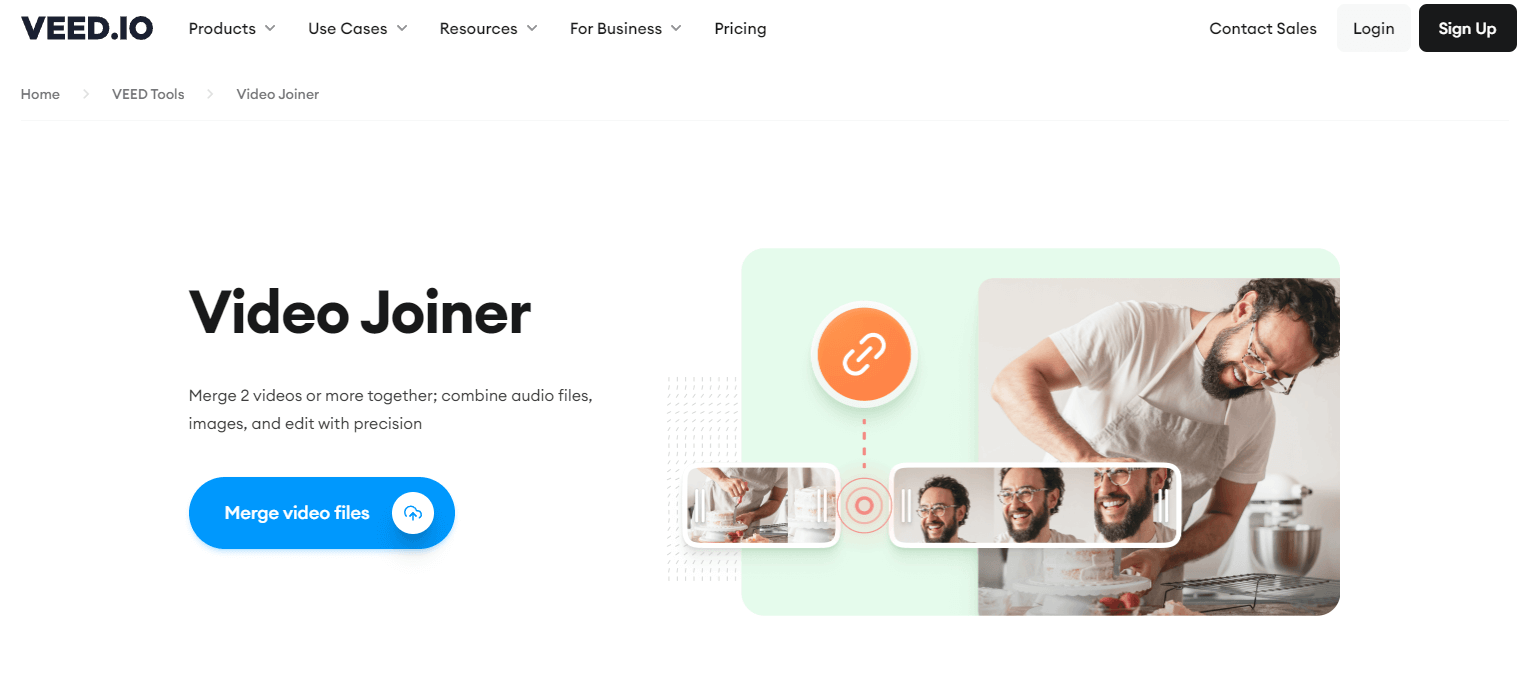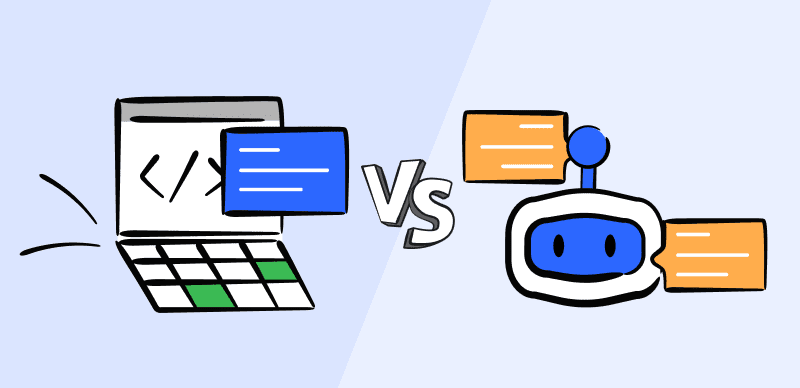Making AI tutorial videos has become an indispensable tool for online education and information sharing. It cannot be denied, also, that the use of AI nowadays really helps make work easier in every business.
That’s the reason why more and more people are increasingly using AI tools today. Unfortunately, not all users have enough time to explore every feature of an AI tool. Due to the busyness of the business, they might have only a little time to explore the features that they need. After all, not all the features in an AI Tool will be used at the same time.
With that, AI tutorial videos have become important; for it shows the easiest ways to use AI with its specific features. Video bloggers saw this as an opportunity and that makes them don’t want to miss creating AI tutorial video content. However, not all content you can find online is effective and gives full value to the users.
Though you already know a few of the advantages of AI tutorial video content, keep reading and digging for more of the strategies, importance, and types of AI tutorial video content.
Also Read: How to Make a Demo Video? >
Strategies, Importance, and Types of AI Tutorial Video
In creating AI tutorial videos, it is important to be familiarized with the strategies of creating effective content, the importance of this for businesses and companies, and the many different types of video content.
Strategies to Create An Effective AI Tutorial Video
Every video content aims to deliver a message to the viewers. It takes strategic steps to deliver it in ways that they could absorb and follow easily. So here are the strategies that you must plan and apply in your AI tutorial video content.
- Leveraging Advanced Video Editor Tools for Engaging Content Creation
Video editor tools have revolutionized content creation, and video tutorials are no exception. Embrace the power of the advanced video editor tool to enhance your video content creation process. Aside from its basic features such as crop, rotate, and edit, it also has some advanced features that will let you add images, filters, and video clips. You can also create your own video tutorial by recording the actual AI use right from your screen with the use of the screen recorder.
- Crafting a Structured Outline
A well-structured outline forms the backbone of any successful video tutorial. You can begin with a clear introduction that outlines the topic and objectives of the tutorial. Then divide the tutorial into sections, each focusing on a specific subtopic. This not only makes the content more digestible but also helps viewers navigate to the information they need. Lastly, ensure a smooth flow of content by using transition words such as “firstly,” “moreover,” and “consequently.”
- Visual Storytelling with High-Quality Graphics
Visual elements play a pivotal role in retaining viewer engagement. You may create visually appealing graphics, animations, and infographics that complement your narrative. Leverage this idea with the use of AI-powered tools to design stunning visuals that simplify complex concepts. And know that the use of high-quality graphics not only enhances understanding but also makes your tutorial more memorable.
- Interactive Simulations and Demonstrations
Make learning an interactive experience by incorporating simulations and demonstrations powered by AI. Interactive elements such as clickable annotations, quizzes, and 3D models can significantly enhance viewer comprehension. This dynamic approach encourages active participation, making the learning process enjoyable and effective.
- Personalized Learning Pathways
AI-driven video tutorials offer the unique advantage of adapting to individual learning preferences. Leverage user data to customize learning pathways and recommend related tutorials. By tailoring content to specific interests and skill levels, you create a personalized learning journey that resonates with each viewer.
- Optimizing for SEO and Discoverability
A meticulously crafted video tutorial is only valuable if it reaches the intended audience. Implement effective SEO strategies to ensure your content ranks high in search results. Conduct thorough keyword research to identify relevant terms and phrases, and strategically incorporate them into your video title, description, and tags. This optimization increases the likelihood of your tutorial being discovered by a wider audience.
- Human Touch and Authenticity
While AI technology is at the core of your content creation, infuse a human touch to establish authenticity and relatability. Showcase the personality behind the tutorial, and use storytelling techniques to connect with viewers emotionally. By striking a balance between AI-generated elements and human presence, you create a tutorial that resonates on a deeper level.
Importance of an Effective AI Tutorial Video Content
Aside from the few advantages of AI tutorial video content above, there are also many other importances below that you need to know. By knowing all these, it can be easier for us to know what to deliver and what to look for in an AI tutorial video content.
- Accessibility and Learning Styles
Video tutorials cater to different learning styles. Some people learn better with the use of visual materials and auditory channels. That makes them grasp easier for complex AI features through tutorial videos. - Engagement and Retention
Videos engage viewers more effectively than text-based content. Visual demonstrations, animations, and real-world examples can help retain viewers’ attention and improve understanding, leading them to better retention of the material. - Complex Concepts Simplified
AI can be intricate and challenging to understand, especially for beginners. But Video tutorials allow creators to break down complex concepts into simpler, more digestible explanations using graphics and analogies. - Step-by-Step Guidance
AI tutorials often involve practical implementations. Videos provide step-by-step guidance allowing the viewers to follow along, pause, and review specific parts as needed while replicating the process. - Real-time Demonstrations
Videos can show AI models or algorithms in action. This demonstrates how AI tools are used in real-time scenarios. With that, it helps learners see the practical applications and benefits of AI technology. - Global Reach
Online videos have a global reach which enables individuals from various parts of the world to access quality AI education. Regardless of their geographic location or time zone, users worldwide can watch tutorial videos and learn from them at the same time. - Interactive Learning
Some video platforms allow creators to incorporate interactive elements such as quizzes, polls, and annotations, enhancing the learning experience and promoting active engagement. - Community Building
AI tutorial videos often foster a sense of community among learners. Viewers can connect, share their progress, ask questions, and learn from each other’s experiences through comments and forums. - Continuous Learning
Video content remains accessible over time, allowing the learners to revisit tutorials whenever they need a refresher or want to delve deeper into specific topics. - Innovation and Exploration
Creators can experiment with different teaching methods, visual aids, and storytelling techniques in videos to make learning AI exciting and engaging. - Career Opportunities
High-quality AI tutorial videos can establish the creator as an expert in the field, leading to potential job opportunities, collaborations, or invitations to speak at conferences and workshops. - Addressing Skill Gap
AI skills are in high demand across industries. Video tutorials help address the AI skill gap by providing accessible resources for individuals to upskill and transition into AI-related roles.
You already know the many importance of creating valuable and informative video tutorial content for the benefit of many users. Know that you cannot start planning and creating one unless you have the full idea of the types of video tutorial content.
Types of AI Tutorial Video Content
There are numerous types of video content, each designed to serve different purposes, engage specific audiences, and convey information in unique ways. Here are some common types of video content:
- Educational Tutorials
These videos provide step-by-step instructions on how to do something, whether it’s learning a new skill, using software, cooking a recipe, or building a DIY project. - Explainer Videos
Explainer videos simplify complex concepts, products, or services into easily understandable and engaging visuals. They’re commonly used to introduce a new idea or explain how something works. Some creators also merge two or more different videos by using a video joiner tool to make a well-explained idea.

Video Joiner Interface
- Product Demonstrations
Brands showcase their products in action, highlighting features, benefits, and use cases. These videos can help potential customers make informed purchasing decisions. - Interviews
Interview videos feature conversations with experts, influencers, or individuals of interest. They provide insights, opinions, and knowledge on specific topics. - Reviews and Testimonials
These videos offer opinions and experiences about products, services, or experiences. They can help viewers make informed decisions and build trust. - Vlogs (Video Blogs)
Vlogs document a person’s daily life, experiences, or travels. They often provide a personal connection between the creator and the audience. - Behind-the-Scenes
Behind-the-scenes videos take viewers backstage to see the making of a product, event, or creative project. They provide a glimpse into the process. - Documentaries
Documentaries explore real-life events, stories, or issues in-depth. They often aim to educate, inform, or raise awareness about a specific subject. - Animation
Animated videos use graphics, illustrations, or characters to convey information, tell stories, or entertain. - Live Streams
Live videos allow creators to engage with their audience in real-time-. They’re often used for Q&A sessions, discussions, webinars, or live events. - How-to Guides
Similar to tutorials, how-to videos guide viewers through a process or task, providing clear instructions and visual demonstrations. - Entertainment
Entertainment videos include skits, comedy sketches, parodies, music videos, and other forms of content meant to entertain and engage the audience. - Educational Lectures
These videos mimic traditional classroom lectures and provide in-depth educational content on a specific subject. - Travel and Exploration
Travel videos showcase destinations, cultures, and experiences from around the world, allowing viewers to virtually explore different places. - Motivational and Inspirational
These videos deliver motivational speeches, stories of overcoming challenges, and inspirational messages to uplift and inspire viewers. - News and Updates
News videos provide current information and updates on relevant topics, events, or trends. - Webinars and Workshops
Webinars are online seminars or workshops that provide educational content, often with interactive elements like Q&A sessions. - FAQs and Q&A
These videos address frequently asked questions or allow viewers to submit questions that the creator answers. - Gaming and eSports
Videos related to video game content, including gameplay, walkthroughs, reviews, and competitive eSports matches. - Time-lapse and Slow-motion
These videos manipulate time to showcase processes quickly (time-lapse) or in extreme detail (slow-motion).
By knowing all these different types of tutorial video content, you will be able to indicate which of the innovative strategies you should use to create impactful AI tutorial video content that educates and leaves a lasting impression on your audience.
Final Words
In the realm of online education and information dissemination, AI tutorial video content stands as a powerful tool. By harnessing the capabilities of AI, you can work on crafting structured outlines, integrating engaging visuals, personalizing learning experiences, and creating impactful tutorials that leave a lasting impression.
Embrace the synergy between technology and creativity to craft AI tutorial video content that educates, inspires, and empowers audiences worldwide. Lastly, don’t forget to always save your created tutorial video content on a small file without compromising its quality with the use of a video compressor tool.



